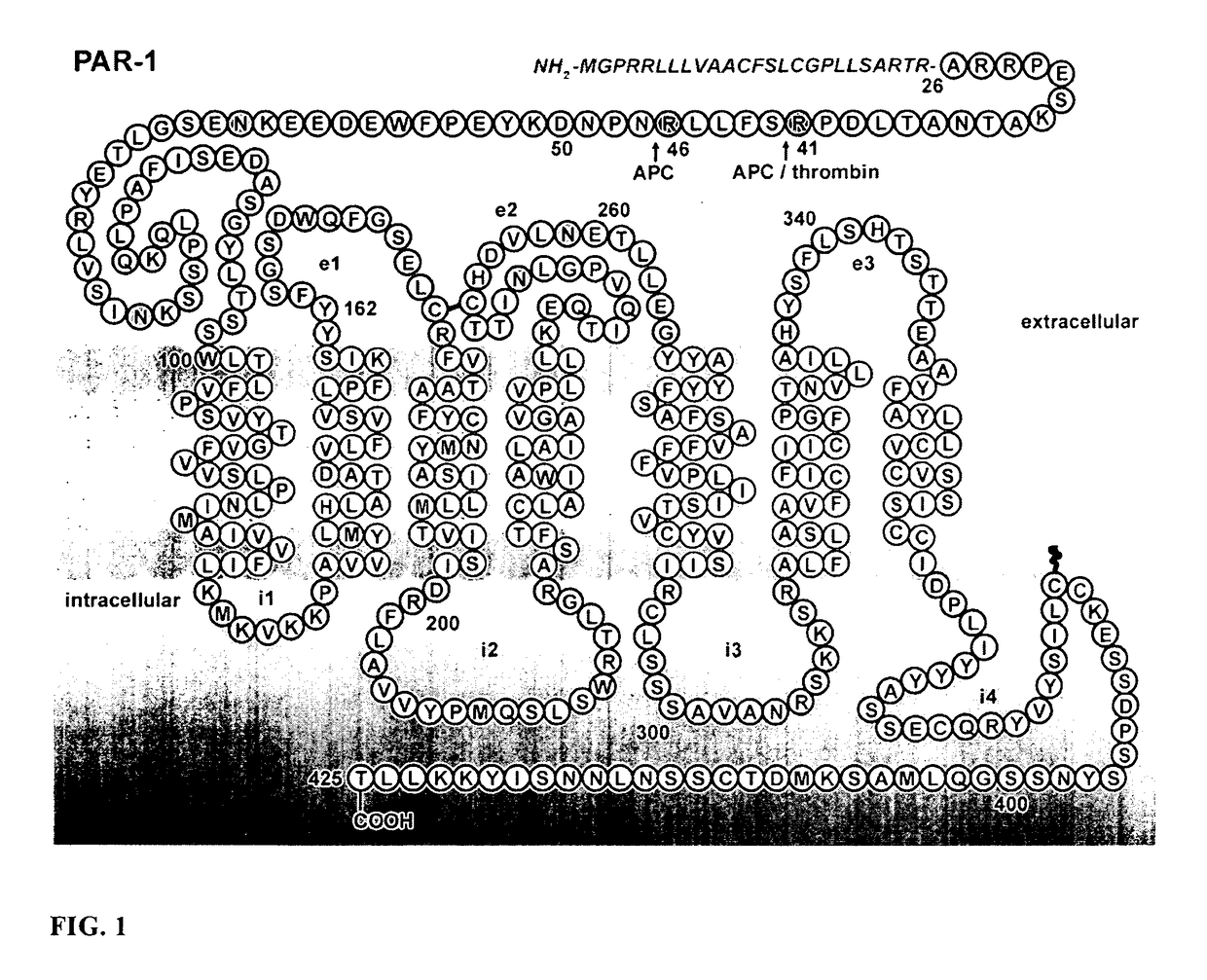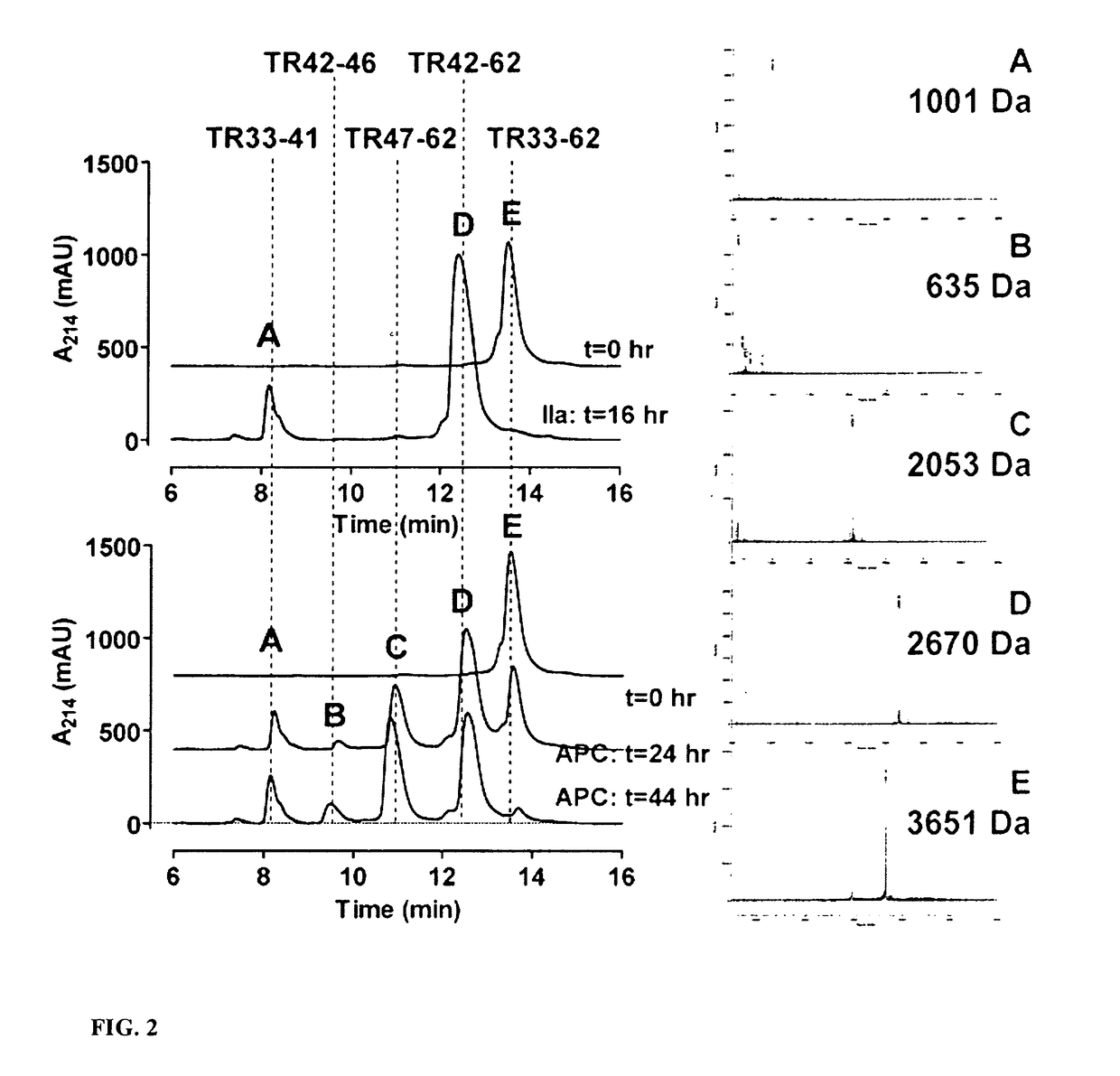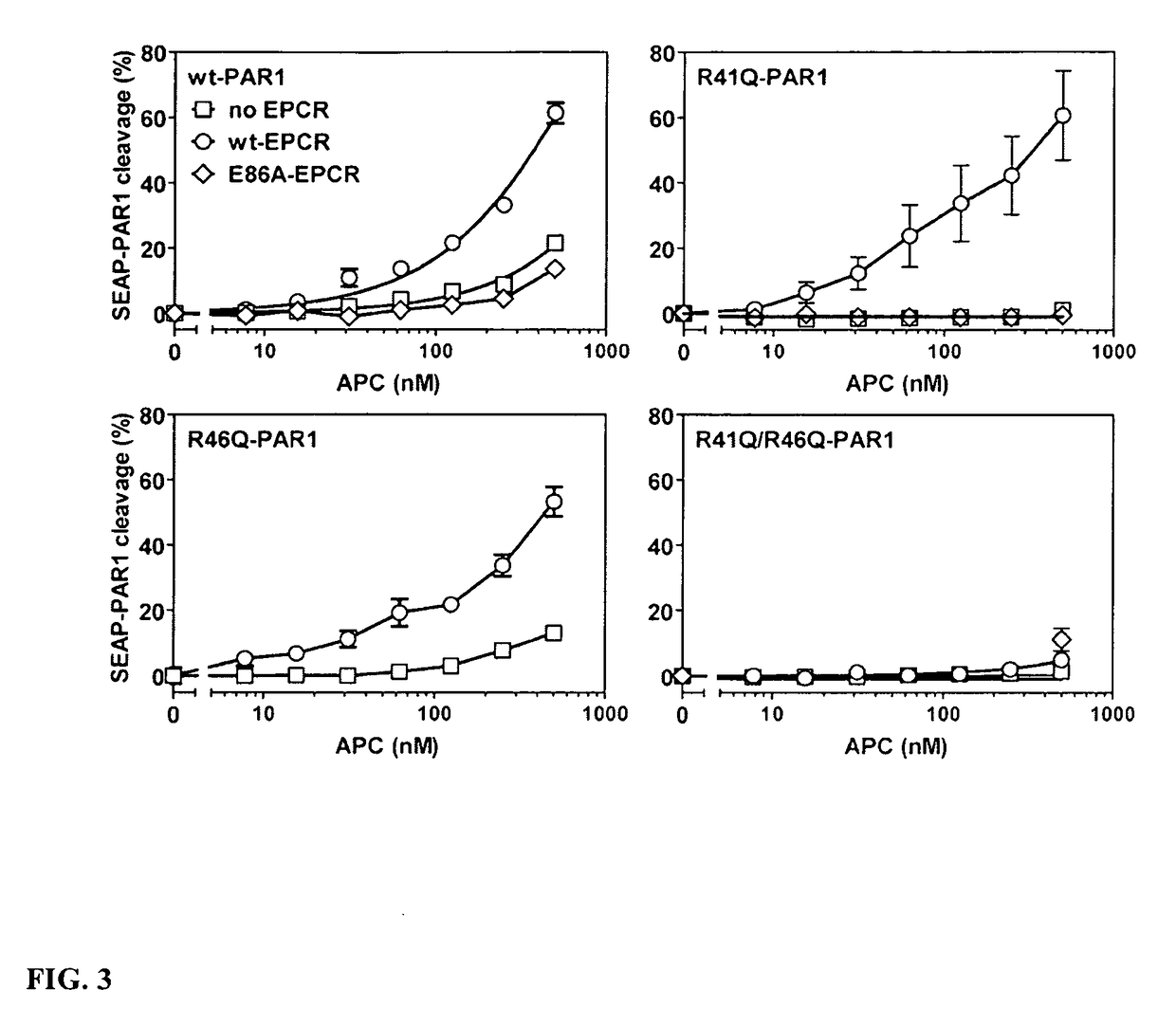Protease Activated Receptor-1 (PAR1) Derived Cytoprotective Polypeptides and Related Methods
a technology of activated receptors and cytoprotective polypeptides, which is applied in the direction of animal/human proteins, drug compositions, peptide/protein ingredients, etc., can solve the problems of affecting the survival of cells or animals, and achieve the activation of the pi3k-akt survival pathway, cytoprotective activity, and the effect of reducing mortality
- Summary
- Abstract
- Description
- Claims
- Application Information
AI Technical Summary
Benefits of technology
Problems solved by technology
Method used
Image
Examples
example 4
n of Cell Signaling (ERK 1 / 2) by APC, Thrombin and TR42-51 (TRAP; TFLL) and TR47-66 (NPND) Peptides on EA.hy.926 Endothelial Cells
[0118]To assess whether PAR1 cleaved at Arg46 would generate a PAR1 N-terminus that is capable of promoting PAR1 signaling, we studied the effects of synthetic peptides on ERK1 / 2 phosphorylation in EAhy926 endothelial cells. ERK1 / 2 phosphorylation is an established marker of PAR1-dependent signaling by thrombin and APC on endothelial cells (Riewald et al., Science. 2002; 296:1880-1882). The peptides included a Thrombin Receptor Activating Peptide (“TRAP”; aka “TFLL”) reflecting the sequence of PAR1 residues 42-51 (SEQ ID NO:8), a peptide comprising residues 47-66 (TR47-66) that would be generated by APC cleavage at Arg46 (SEQ ID NO:4), and a control scrambled TR47-66 peptide (designated “scr-TR47-66”) containing scrambled residues 47-66 (SEQ ID NO:9). Relative phosphorylation of ERK1 / 2 was determined using the LI-COR Odyssey infrared imaging system which ...
example 5
ial Activation of Akt by the TR47-66 Peptide Versus Preferential Activation of ERK1 / 2 by the TR42-51 Peptide (TFLL) on EA.hy.926 Endothelial Cells
[0121]Activated Protein C (APC) cleaves a synthetic PAR1 tail peptide at Arg41 and Arg46; furthermore, APC cleaves SEAP-PAR1 mutants with the mutations R41A or R41Q but not SEAP-PAR1 with both R41Q / R46Q mutations. Thrombin does not cleave PAR1 at Arg46. It was thus hypothesized that a new PAR1 N-terminus beginning at residue Asn-47 promotes PAR1 signaling and APC cytoprotective activities. Since phosphorylation of signaling network components is useful for monitoring activation of signaling pathways, the effects of synthetic PAR1 peptides on Akt and ERK1 / 2 phosphorylation in EA.hy.926 human endothelial cells were studied. Cells were treated for 0, 5 or 30 min with peptides prior to cell fixation, permeabilization of cells and subsequent immunoblotting analysis (“in-cell Western blotting”). Relative phosphorylation of Akt at Ser473 (pSer473...
example 6
eptide Conveys Anti-Apoptotic Effects on EA.hy.926 Endothelial Cells
[0124]Activated Protein C (APC) conveys anti-apoptotic activity to EA.hy.926 cells that requires functional PAR1 receptor and APC binding to the endothelial protein C receptor (EPCR). See, e.g., Mosnier et al., Biochem J. 2003; 373:65-70; and Mosnier et al., Blood. 2007; 109:3161-3172. To determine whether APC's anti-apoptotic activity is the result of PAR1 cleavage at Arg41 or at Arg46, PAR1 peptides representing the newly generated N-termini after cleavage at Arg41 (TFLL) or at Arg46 (NPND) were evaluated for their ability to inhibit staurosporine-induced endothelial cell apoptosis. It was found that the NPND peptide significantly inhibited endothelial cell apoptosis (FIG. 8). This demonstrates that non-canonical cleavage of PAR1 at Arg46 generates a new, signaling competent N-terminus that conveys anti-apoptotic activity. In contrast, the TFLL peptide representing the new N-terminus of PAR1 resulting from canonic...
PUM
| Property | Measurement | Unit |
|---|---|---|
| diameter | aaaaa | aaaaa |
| pH | aaaaa | aaaaa |
| pore size | aaaaa | aaaaa |
Abstract
Description
Claims
Application Information
 Login to view more
Login to view more - R&D Engineer
- R&D Manager
- IP Professional
- Industry Leading Data Capabilities
- Powerful AI technology
- Patent DNA Extraction
Browse by: Latest US Patents, China's latest patents, Technical Efficacy Thesaurus, Application Domain, Technology Topic.
© 2024 PatSnap. All rights reserved.Legal|Privacy policy|Modern Slavery Act Transparency Statement|Sitemap



